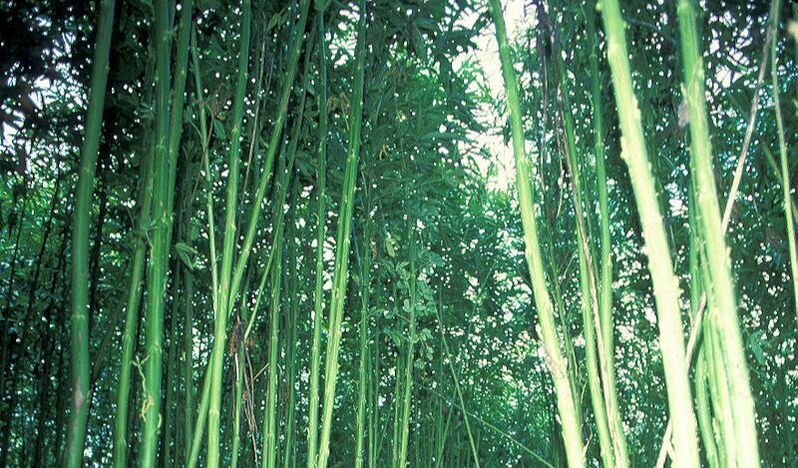|
From ancient times until the end of the 19th century, unique fibers for the production of textile materials have been created. These were fibers of wild plants. They are mostly coarse, strong, tough and produced from kenaf, jute, hemp, and other plants. Kenaf is cultivated mainly in India, China, Iran, Uzbekistan, and other countries. Kenaf fiber is highly hygroscopic and durable. It is used for making burlap, tarpaulin, twine, etc. Origin and composition Kenaf belongs to valuable bast-fiber crops. Its fiber is distinguished by strength, flexibility, and hygroscopicity. Kenaf fiber is used for the manufacturing sack fabrics, tarpaulins and other products such as twine and ropes. Kenaf fiber is also in demand for the production of carpets. In some countries, young kenaf leaves with a sour taste are used for food, and young shoots are used for animal feed. Stem processing waste is utilized in papermaking and in the construction industry. Kenaf seeds contain up to 20% of non-drying technical oil used in the leather, soap and paint industries. Kenaf oilcake is used as feed for farm animals and as fertilizer. Sowing and growth conditions Kenaf is an annual herbaceous plant with a well developed root system, that penetrates the soil to a depth of 2 m or more. Kenaf is a thermophilic plant with a vegetation period of 140-160 days. Kenaf's need for moisture is high. It is cultivated by irrigation or in areas with high rainfall. It is a photophilous plant of short daylight hours. With insufficient lighting in overly thickened crops, the plants grow undersized and weak. Kenaf works well on light loamy, humus-rich soils, alluvial soils of river valleys, and meadow soils. Saline and boggy soils are unsuitable for growing this plant. It blooms in July - September. Usually, fresh young leaves are harvested throughout the summer. Application Kenaf leaf infusions can be used to treat intestinal and skin diseases or pneumonia. Young kenaf leaves can be eaten fresh. Currently, Kenaf fiber is intensively used in the creation of mattresses, fabrics for upholstery and clothing, etc. due to its properties: - It is 100% natural material. It does not emit harmful substances and prevents the development of unwanted microorganisms. - It “breathes” perfectly, creating a natural microclimate around a person - It has high strength, which increases the service life of the product. - Due to its natural resistance, kenaf fiber does not lose its properties in a humid environment and, when dried, completely restores its properties. - It is completely biodegradable. It can be utilized as biofuel or natural absorbent material. Of course, more research and investments are needed for kenaf to become wide-spread globally, but the economic and environmental benefits of this amazing plant leave no doubt that it is only a matter of time. “When most people talk about biofuels, they talk about using oils or grease from plants.” Craig Venter
0 Comments
Leave a Reply. |
GROW ORGANIC!
|
|


 RSS Feed
RSS Feed




